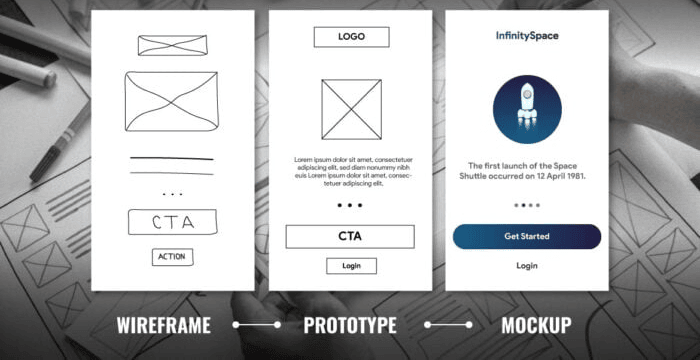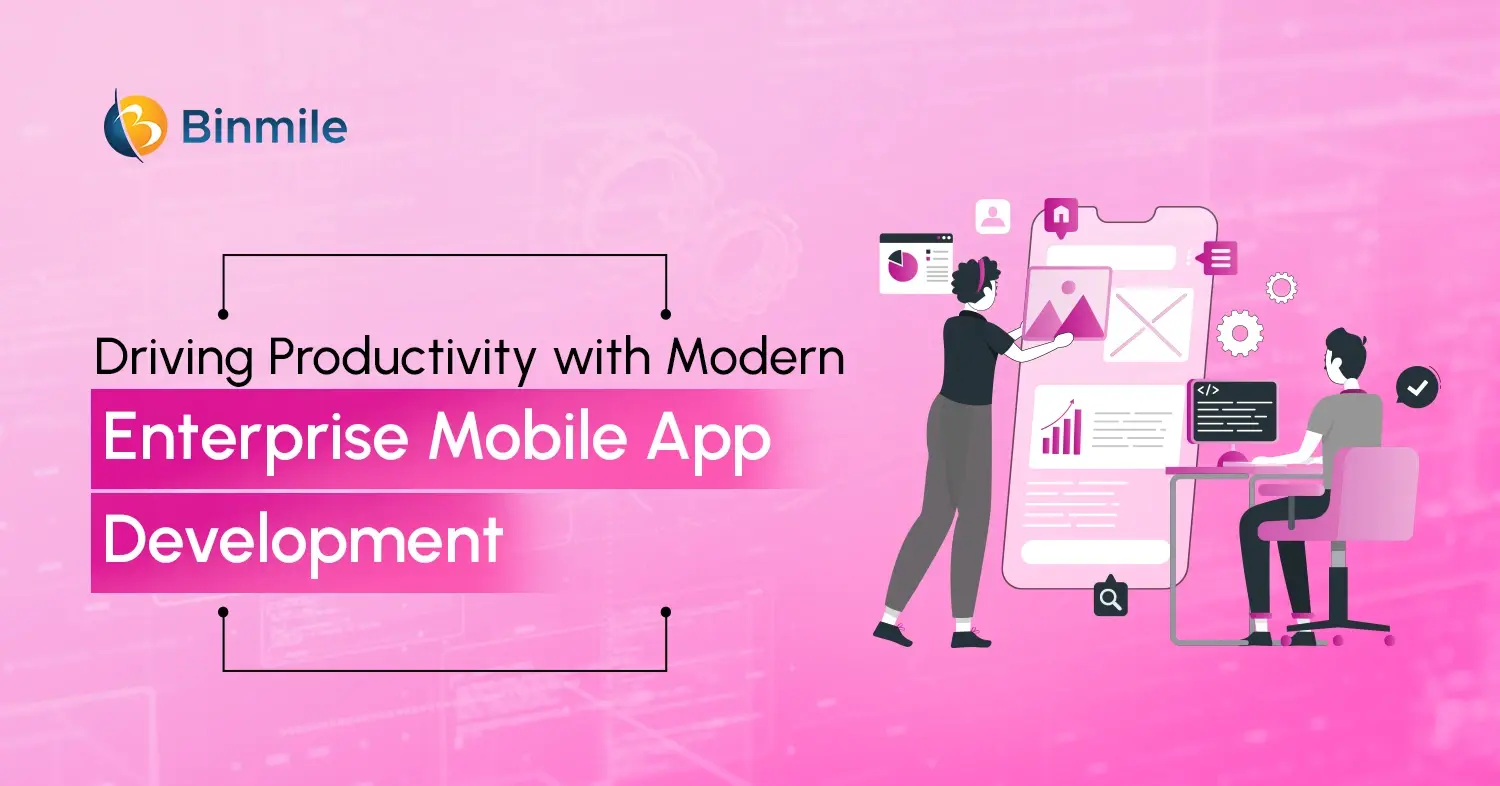A compelling and decisive vision forms the bedrock of a successful UX product, steering designers to craft user experiences that resonate and leave a lasting impact. However, to embark on this journey, we’ll have to delve into the very essence of a UX product vision: its definition, its power, and its role in driving meaningful design.
What is a UX product vision?
The UX product vision is a powerful force that shapes the path of design. In fact, it is a clear and inspiring statement that outlines the desired future state of the product’s user experience strategy. Acting as a compass, it guides designers in making informed decisions and developing strategies that align with the overall goals and values. With this in mind, designers actively work towards creating impactful and meaningful user experiences, driving the product towards success.

So, Why is a UX Product Vision Crucial for Designers?
The UX product vision plays a vital role, serving as the cornerstone of the design process with multiple significant impacts. Above all, a well-defined vision empowers designers by aligning their efforts with the product’s overarching objectives.
Moreover, it acts as a compelling communication tool, allowing designers to express their ideas and garner support from stakeholders. Besides, with a clear UX product vision, designers confidently prioritize features and create a cohesive, user-centered experience.
In this blog, we will explore the essential elements of crafting a robust product design vision and provide practical guidance for designers. By the end, you will possess a comprehensive understanding of how to forge a compelling UX product vision that paves the way for successful ui/ux design services.
Unveiling Insights for an Impactful UX Product Vision
A. Conducting User Research
To start, designers should conduct thorough user research to gather valuable insights about user preferences, pain points, and behaviors. In addition, this can be done through interviews, surveys, and usability testing, which provide essential data for the design process.
B. Analyzing User Needs and Behaviors
Once the research is done, designers need to carefully analyze the collected data to identify patterns and trends. Additionally, this analysis helps in understanding user needs, behaviors, and motivations, as well as uncovering common pain points.
C. Creating User Personas
Most importantly, creating user personas based on research insights is another crucial step. Subsequently, these personas represent fictional characters that embody the characteristics of the target users. Whatever the case, they help designers empathize with the audience and make user-centered design decisions.
D. Defining User Goals and Objectives
Defining clear user goals and objectives is essential for aligning the product vision and strategy with user needs. Moreover, it ensures that the product addresses the most important tasks and objectives of the target audience, leading to a more impactful user experience.
Aligning the UX Product Vision with Strategic Success

A. Collaborating with Stakeholders
Consequently, collaborating with stakeholders, such as product managers and executives, is vital for designers to understand the broader business context and goals. Further to this, actively involving stakeholders, helps designers gain insights into the organization’s vision and objectives.
B. Understanding Business Objectives
Designers need to understand the business goals that not only drive the development of a product but also work best for any product development company that makes it. This entails analyzing market trends, the competitive landscape, and business strategies to identify key priorities and goals.
C. Aligning User Needs with Business Goals
A successful UX product design vision integrates user needs with the strategic goals of the business. Designers proactively align user needs, pain points, and desired outcomes with the business objectives within the UX product vision. Objectively, this ensures that the product not only meets user expectations but also contributes to the overall success of the organization.
Companies with Inspiring UX Product Visions
Tesla
For example, Tesla aims to accelerate the world’s transition to sustainable energy. They do so, by revolutionizing the automotive industry with high-performance electric vehicles that surpass traditional cars. Overall, their vision embraces a future where sustainable transportation and renewable energy become the norm. Further, driving global adoption of clean energy solutions.

Netflix
Comparatively, Netflix strives to transform the way people consume entertainment by offering a personalized, on-demand streaming experience that goes beyond traditional TV and film viewing. Their product vision and strategy is to curate a vast library of captivating content, tailored to users’ preferences, enabling them to embark on immersive journeys and discover engaging stories.
Apple
Apple wants to make it easy for all individuals to use technology in their everyday lives by making products that are easy to use and look good. As a matter of fact, they try to make complicated jobs easier, spark creativity, and make users feel something, thereby transforming the Custom UI/UX Design Solutions in a big way.

Nike
Last but not the least, Nike inspires a global community of athletes, fostering self-expression, motivation, and a commitment to personal excellence. In addition, Nike’s product vision and strategy revolves around empowering athletes and individuals to push their limits. They design innovative sports apparel and footwear that enhance performance, comfort, and style.

Defining the Product Vision: Unleashing the Power of Design
A. Crafting a Compelling Vision Statement
To build an exceptional product, designers actively unleash their creativity by crafting a compelling vision statement. This dynamic declaration sets the stage for the journey ahead, igniting inspiration and driving the team towards success.
B. Clarifying the Purpose and Value of the Product
In the quest for an outstanding product, designers actively illuminate the user’s experience by clarifying its purpose and value. By diving deep into the users’ needs and desires, they shed light on the transformative impact the product will have, creating an irresistible value proposition.
C. Establishing Key Differentiators
As a matter of fact, designers forge a path of distinction by establishing key differentiators that make the product stand out from the crowd. They harness their innovative spirit to identify unique features and qualities that will captivate users, setting the product apart in a sea of competition.
D. Charting the Course to Greatness
With unwavering determination, designers chart the course to greatness by setting long-term goals and direction. They craft a roadmap that guides the product’s evolution, ensuring it remains on track towards its destination while embracing adaptability along the way. The best being, they breathe life into the product vision, transforming it into an irresistible force that propels their design journey forward.
Also Read: Mobile App Development Process
Creating User Journey Maps: Unveiling the Path to User Delight
A. Mapping the User’s Experience
Designers strive to create delightful user experiences by tapping into the power of empathy. Notably, they step into the user’s shoes to understand their needs, desires, and challenges. This empathetic approach, indeed, helps uncover valuable insights that drive the creation of exceptional user experiences.
B. Identifying Pain Points and Opportunities
With a keen eye for detail, designers illuminate the path to improvement by identifying pain points and uncovering hidden opportunities. They navigate through the user journey, unveiling moments of frustration and untapped potential, transforming them into stepping stones towards greatness.
C. Aligning User Goals with Product Features
Designers fuel the road to success by aligning user goals with product features. They harmonize the aspirations of the users with the innovative capabilities of the product, bridging the gap between desire and reality.
Subsequently, the above pointers reveal the intricate paths that users tread, paving the way to a design that surpasses expectations and sparks joy at every step.
Prioritizing Features and Functionality: Aligning the UX Product Vision for Optimal Impact
A. Conducting Feature Prioritization Exercises
With meticulous attention to detail, they weave the threads of delight by establishing a consistent user experience. Further, they connect each touchpoint, ensuring a cohesive journey that instills trust, familiarity, and ease of use for users across platforms and devices.
B. Balancing User Needs with Technical Feasibility
With skill and creativity, designers push the limits of innovation by finding the right mix between what users want and what is technically possible. They balance what users want with what is possible, making a seamless blend of usefulness and pleasure.
C. Considering Business Constraints and Resources
Designers create a road to long-term success by carefully considering the needs and resources of a business. They do a great job of balancing creativity with practicality, keeping in mind funds, deadlines, and available resources while staying committed to making great user experiences.
Creating Design Principles
A. Defining Design Guidelines and Standards
Designers actively influence the route to cohesiveness in the pursuit of great design by creating clear design rules and standards. They create a clear foundation that guides the design of cohesive and visually harmonious experiences that are appealing to users.
B. Establishing a Consistent User Experience
With meticulous attention to detail, they weave the threads of delight by establishing a consistent user experience. They connect each touchpoint, ensuring a cohesive journey that instills trust, familiarity, and ease of use for users across platforms and devices.
C. Incorporating Accessibility and Inclusivity
In addition, designers open the doors of empowerment by incorporating accessibility and inclusivity into their design principles. They embrace diverse user needs, making the design accessible to all, regardless of abilities or circumstances, and fostering a sense of inclusivity and belonging.
Nevertheless, as the above points show, designers bring out the true spirit of great design.
Communicating the Product Vision
A. Visualizing the UX Product Vision with Wireframes and Prototypes
Designers breathe life into the product vision by vividly visualizing it through wireframes and prototypes. These tangible representations give shape and form to the visionary ideas, allowing stakeholders to immerse themselves in the future product experience.

B. Storytelling and Presenting the Vision
Designers master the art of captivating hearts and minds as they skillfully tell the story of the product vision. However, with passion and eloquence, they paint a vivid picture of how the product will transform lives, engage emotions, and fulfill unmet needs. Meanwhile, leaving stakeholders inspired and eager to be part of the journey.
C. Getting Stakeholder Buy-in and Alignment
Designers actively foster unity and support by securing stakeholder buy-in and alignment with the product vision. Also, through open communication and persuasive arguments, they rally stakeholders around a shared purpose, forging a united front that propels the vision forward with unwavering determination.
Read Also: Digital Product Development
Iterating and Evolving the UX Product Vision
A. Gathering Feedback from Users and Stakeholders
Designers often use the valuable information they get from talking to users and other people who are interested. Similarly, they actively look for different points of view and constructive feedback, which they use to help them grow as people. They do this by always listening to what users say and changing the direction of the product based on what they hear.
B. Adapting to Changing Market Needs and Trends
They sail boldly into the winds of change, changing the goals of a product based on what the market wants. Surprisingly, they are always one step ahead of everyone else and eager to try out new ideas, accept cutting-edge innovations, and take over uncharted territory.
C. Incorporating Continuous Improvements
Their unwavering commitment to constant improvement drives the process of perfecting the product vision. Besides, they have a “growth mindset,” which means they are always looking for ways to improve the product and their methods so that the end result is the best it can be for users.
Read Also: Best Frontend Framework 2024
The Bottom Line
To summarize, a well-crafted UX product vision serves as the catalyst that propels designers forward and captivates consumers. By immersing themselves in user research, defining personas, and setting clear goals, designers unlock their full creative potential, transforming mundane tasks into masterpieces. Additionally, collaborating with key stakeholders, they strike a delicate balance between company objectives and consumer preferences, crafting a recipe for success.
Similarly, with a touch of magic, UI/UX designers create captivating user journey maps, revealing hidden gems and prioritizing features that dazzle and delight. In any case, their design principles weave a tapestry of consistency and openness, mesmerizing users with an immersive experience. Likewise, by constructing vivid wireframes and prototypes, they paint a compelling picture of the product’s future, inviting stakeholders to join the journey.
Even so, designers make sure that every product development company stays at the forefront of innovation by iterating, adapting to market trends, and embracing continuous improvement. This dynamic approach keeps them on the cutting edge, delivering exceptional products that leave a lasting impact.
Above all, Binmile, a top UI/UX Design Services Company, has the best designers who combine technology, visual appeal, and business goals. So much so forth, the result is a web-based solution that not only loads quickly but also leaves a profound impact. With this in mind, you now know who to reach out to for highly converting online experiences.









